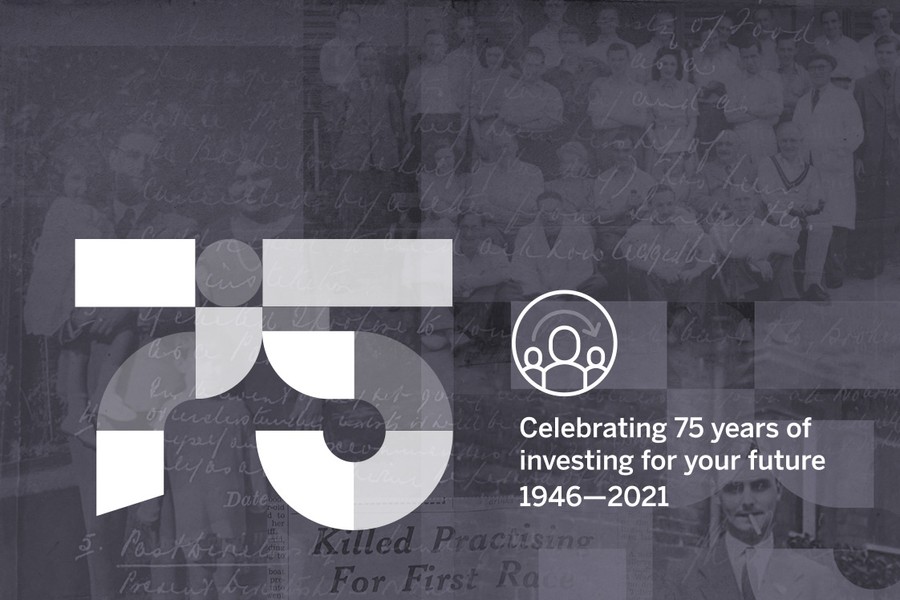The Finns flee Russia
Sometime between 1880 and 1891, John Mendl Finn’s grandfather Moses and his wife and five young children fled persecution in the Polish city of Bialystok, then a part of Imperial Russia, and took a boat to Newcastle. Moses eked out an existence as a travelling draper and died in relative poverty, but his eldest son Meyer was destined for greater things.
An unknown patron must have noticed Meyer’s exceptional abilities – he was a polymath and could speak seven languages fluently – because he received a university education, something almost unheard of in those days for a person in his modest position.
Graduating from an offshoot of Durham University, Meyer had a brief stint as a teacher in Derbyshire before moving down to Southend to teach mathematics and physics in the newly founded Southend High School for Boys. In the 1920s he got his pupils to build one of the first radio receivers in the country using a roomful of test tubes filled with sulphuric acid as makeshift batteries. He was briefly appointed to the position of acting headmaster, and was even quoted as the inspiration for his success by a Fellow of the Royal Society. Meyer was clearly a very capable and much loved figure.

John Mendl Finn the commodity broker
John Mendl Finn was born on 5th September 1901, and he was the third of Meyer’s approximately ten children. Along with his younger brother Philip, who was also destined to be a partner in J.M. Finn & Co., he was educated at his father’s school. When he left school at the age of seventeen, a family friend gave John Mendl a job in his firm of commodity brokers on the Baltic Exchange in the City.
John Mendl quickly proved his value. By the age of twenty three he had outgrown the firm he had started with, and had become one of the three principals in the firm of Drummond Power & Co. Here he met a man of similar age who was to become his lifelong friend and business partner – Leslie Houlding.
In 1927 John Mendl set up his own company – the first J.M. Finn & Co, and it is clear that by then he was a major player in the world of commodities; his CV shows he was the London agent of no less a firm than J.S. Bache & Co of New York. Julius Bache, who counted the Rockefellers among his clients, was one of the most famous brokers on Wall Street, and the driving force behind the firm of J.S. Bache & Co. Bache & Co became Pru-Bache in the 1990s before it was acquired in the current millennium by Jefferies Group. Family legend tells how John Mendl was dismissed by Bache and sued them for unfair dismissal – an unheard of step in those days. Awarded, in or possibly out of Court, the sum of US$ 10,000, John Mendl staked it all on a single position in the futures market. He got it right and became rich overnight.
John Mendl joined the American firm of Sanday & Co. Inc., bringing the loyal Leslie Houlding with him, and for many years John Mendl was the firm’s managing director. The firm had offices in New York, Paris, London and Liverpool, and the way in which The Times reported on their periodic reviews of the grain market indicates that it was both an influential and a much respected firm.
The road to Kenneth Carr & Co.
Kenneth Carr & Co was to be John Mendl’s entry point into the Stock Market after the Second World War, and it had a hitherto un-researched and unique history.
Its long history can properly begin with the transition of stockbroking from something done in coffee houses to an activity conducted by ‘members only’ in their own bespoke premises in the early 1800s, and with one of the most fabled Stock Exchange coups of all time – Nathan Mayer Rothschild’s legendary (and much disputed) piece of market manipulation whereby according to some accounts, he cleverly obtained early news of Wellington’s victory at Waterloo and made a fortune by first selling the market and making everyone think that England had been defeated, and then by buying back into the market at rock bottom prices.
Whatever the truth of that episode, Rothschild’s brother-in-law and stockbroker was one of the most prominent ‘financier benefactors’ of the nineteenth century, (Sir) Moses Montefiore, who had joined what we now know as the Stock Exchange a year or so after its inception. Moses passed his Stock Exchange business on to his younger brother Horatio, and Horatio’s sons Benjamin and Moses continued in the family business, eventually calling themselves Montefiore Brothers. When Moses died, Benjamin went into partnership with Ernest Mocatta, a descendant of the Mocatta family which had founded the London bullion market. In due course Benjamin died and by the late 1890s the firm had become known as Mocatta & Foà.
How they came across him is not known, but towards the end of the century, Mocatta and Foà took on a young German recently arrived from Frankfurt on Main – Maurice Oppenheim. Maurice stayed with them for some ten years and they took a great liking to him, making him an authorised clerk in 1902.
Much as he liked them, Maurice decided that his future lay in jobbing rather than broking, and he set up in partnership with Charles (later Sir Charles) Kerr as a jobber. Maurice’s brother Fritz (who later changed his name to Frederick) followed him to England, and was accepted as a trainee by the firm. By 1909 the firm was known as Oppenheim & Greenwood, and Frederick had joined his brother as a partner.
All went well until the outbreak of World War One, but as the war progressed, so did the strength of feeling against those of German birth, even if, like the Oppenheims, they were now British citizens. There was a well-orchestrated campaign, endorsed from the very top of the Stock Exchange, to rid itself of these ‘undesirable’ persons, and by 1917 the Oppenheims – and all others of their like – had been unceremoniously kicked out.
After a period of unemployment, Frederick Oppenheim re-entered the City. In 1924, he came across a man twenty one years his junior called Kenneth Carr. Following a stint in the Army in World War One, Carr had a brief and unsuccessful career as sales director and part owner of a soap manufacturing company, before turning to stockbroking. For the next ten years the two worked at a succession of firms, with the one seemingly following the other to his new ‘home’, just as Leslie Houlding followed John Mendl Finn, who was slightly younger than Kenneth Carr, from firm to firm at around the same time. Despite their age difference, Oppenheim and Carr must have ‘hit it off’, because in 1934 they set up their own two man broking firm just north of the Bank of England, under the name of Kenneth Carr & Co.

Above: A clip from The Daily Herald reporting the death of Kenneth Carr, including in their report his only known photograph
At first all went well, but then disaster struck. Carr, an only child, took an interest in motor racing, and having passed the necessary proficiency tests, he registered himself for his first race – at Brooklands, on the Whitsun Bank Holiday meeting on 1st June 1936. The race was in the afternoon and Kenneth went for a precautionary practice run in the morning. He lost control of the car – borrowed from his friend Harry Rose, who was the son of the founder of Great Universal Stores – and killed himself. The track owners decided to keep the news quiet so as not to spoil the holiday atmosphere of the day, and bookmakers were still accepting bets on him for several hours after his death, unaware of what had occurred. When the death was finally made public it was reported in daily newspapers up and down the country. Harry Rose was so upset by it all that he never raced again.
The elderly Frederick must have been in despair, but he kept the firm going and brought in new partners. He also kept the name unchanged, and Carr’s name was retained for some years after John Mendl Finn purchased the company in 1945, as it was at first renamed Kenneth Carr, Finn & Co.
World War Two
While others played their part in the war at home and abroad, this chapter concentrates on the wartime careers of three people; John Mendl Finn, his friend and colleague Leslie Houlding, and John Mendl’s protégé after the war, the young Peter Freeman.
The Ministry of Food was well prepared when war was declared, and the Ministry assumed control of the London and Liverpool (i.e all the U.K.) offices of Sanday & Co Inc, and of other firms like it. According to his son Peter, John Mendl Finn headed a minute sized firm within the Ministry of Food during the war, and Peter Freeman fleshed this out by telling the author that John Mendl Finn was responsible for all the purchases of grain the U.K. made during the war.
The official records contain a number of documents relating to or written by his friend Leslie Houlding. Leslie was seconded directly into the Ministry of Food, initially as a relatively humble trade assistant in its Cereals Division, and latterly was the director of the Points Rationing & Welfare Foods Division, a very senior position indeed. It could be said that John Mendl and Leslie’s work in the war was complementary insofar as the one was obtaining food while the other was arranging its fair distribution.
Peter Freeman’s war was of an entirely grittier kind. He enlisted in the Royal Signals at the age of eighteen, and his first assignment after officer training was to command a group of motorcycling experts who trained motor cycle dispatch riders. When one of the experts followed Peter down the A1 at high speed, his bike slid under a lorry on the trunk road and he died, Peter had his first (but not last) experience of writing a letter to a loved-one informing them that their nearest and dearest would never come home.
Seeking action, Peter transferred to a Tank Division, and although it did not get him into the action, through this he met for the first time and completely by chance his future mentor John Mendl Finn. Still impatient for action, Peter volunteered for the Army Commandos, and after being interviewed by the legendary Lord Lovatt, he was accepted and trained in Special Forces techniques at the (in)famous Achnacarry training camp before being sent out to an island off the coast of Dalmatia (now Croatia).
Peter’s final action came during June 1944, when the commandos and communist partisans tried to seize the well-fortified enemy strongholds on the island of Brac. Peter started the action with perilous surveillance missions on two of the other occupied islands, and then helped to lead an abortive rescue mission when his commanding officer ‘Mad Jack’ Churchill was captured. In his final action, Peter was hit by machine gun fire and left to die by the German soldiers once they had relieved him of his machine gun and his wristwatch. Thanks to the bravery of a local woman who found him just-alive many hours later, Peter escaped death.
John Mendl Finn turns to stockbroking
When the war ended, John Mendl decided there would be no future in grain trading as foodstuffs would be heavily price-controlled, and he decided to acquire a firm of stockbrokers. The firm he bought was Kenneth Carr & Co. John became a member of the Stock Exchange on 31 Dec 1945. The firm changed its name to Kenneth Carr, Finn & Co. on 1st Jan 1946, and then to J.M. Finn & Co. in 1948.

Above: A section from John Mendl Finn’s CV in his application to be a member of the Stock Exchange, Photo courtesy of Guildhall Library / London Metropolitan Archives
Members of the old firm were joined by John Mendl, his loyal colleague Leslie Houlding, and a stockbroker acquaintance of Finn’s named Denny Meyer. The support staff in the firm were bolstered by some of John’s Back Office staff from his commodity trading days, including Reg Fowler and Ken King.
John Mendl’s Finn’s next three decades
In 1948, a twenty-six year old Peter Freeman joined the firm, and set about building a cutting edge Research Department; a counterpoint to John Mendl Finn’s more intuitive style of trading. Having gained while ‘on the job’ a top degree at London University, Peter was frequently invited back to lecture on investment analysis and he was one of the earliest members of the Society of Investment Analysts, the forerunner of CFA UK. His presentation to the Jenkins Committee on Company Law alongside the Society’s chairman in 1962 was considered crucial to the standing of the Society, and when CFA UK celebrated its sixtieth anniversary in 2015, as one of its ten-or-so most influential members, Peter was given a profile in the anniversary issue of the Society’s magazine ‘Professional Investor’.
In the 1950s Peter was joined by others who were to make their mark on the firm, such as Geoffrey Yeatts, Kevin O’Hanlon and Richard Faull. In the ensuing years, they were joined by others including long serving Partner Graham Poole, the firm’s third Senior Partner, Cedric Feather, John Michael Finn (the founder’s nephew), and David Brittain.

Above: The firm at cricket (1948)
The Chapter also tells the story of John Mendl’s daughter Pamela, who in 1953, at the age of twenty-seven, had a tragic riding accident which left her paralysed for life. Undaunted by her painful disability, she went on to become an early Paralympian and, later on and famously, to have become the first presenter to appear in a wheelchair on television.
This Chapter also tell of other famous personalities to have been associated with the firm. One is Norman Hill, who was one of the firm’s dealers for seventeen years, and who was the father of motor racing champion Graham Hill and the grandfather of motor racing champion Damon Hill. Another is Diana Laird Craig, who shattered a ‘glass ceiling’ in 1973 by becoming the first woman to be allowed on to the floor of the London Stock Exchange.
The next quarter century as a Partnership
With ‘Big Bang’, the world of stockbroking changed forever on 27th October 1986, and in many ways this was an inevitable change, however much some Partners may have regretted it. The size of U.K. securities firms was no longer capped by legislation, and advances in technology helped make securities trading an even more international business. The French looked on with interest while London went through these changes, and in the early 1980s the Perouse Commission was formed to look at ways to reform the antiquated Paris Bourse. Peter Freeman was co-opted, and was the only Anglo Saxon to be co-opted, to assist the Commission in its deliberations. For his services to the French financial services industry, Peter was appointed a chevalier in the French Ordre Nationale du Merite in 1977, and he was appointed a chevalier of the Legion d’Honneur in 1986. Rare honours indeed for a foreigner to be given.
Regulation had to evolve to keep pace, and from 1988, when Peter Freeman retired, our third senior partner, Cedric Feather, had the task of leading the firm through the greater part of this period of intense change.
Cedric Feather was succeeded as senior Partner in 1999 by James Edgedale, and a period of expansion began. Branches were opened in Bristol, Leeds, Bury St Edmunds and Cardiff, and both the headcount and funds under management grew steadily. Meanwhile, Steven Sussman, who had joined in 1997, and who later became the firm’s Chief Executive Officer, helped bring the administration into the modern world.
The firm incorporates
Recognising that almost all of the other stockbroking partnerships had by now disappeared, and that it would be increasingly difficult to attract promising newcomers into a firm where they had unlimited liability, and where if they did well they would be expected to contribute significant sums to the firm’s capital, the firm made the decision to incorporate in 2006. In light of its growth, the firm decided in the same year to move its premises from Salisbury House in London Wall to 4 Coleman Street.
The Ackermann / Delen era
The prestigious Belgian group of Ackermann / Delen acquired a majority stake in 2011, and the book concludes with a brief account of the changes the firm underwent between then and Easter 2019, with an account of its most recent successes in industry awards, and of the unprecedentedly high scores it has received in its client satisfaction surveys.
Charles Beck, a former partner and Director of Compliance at JM Finn.




